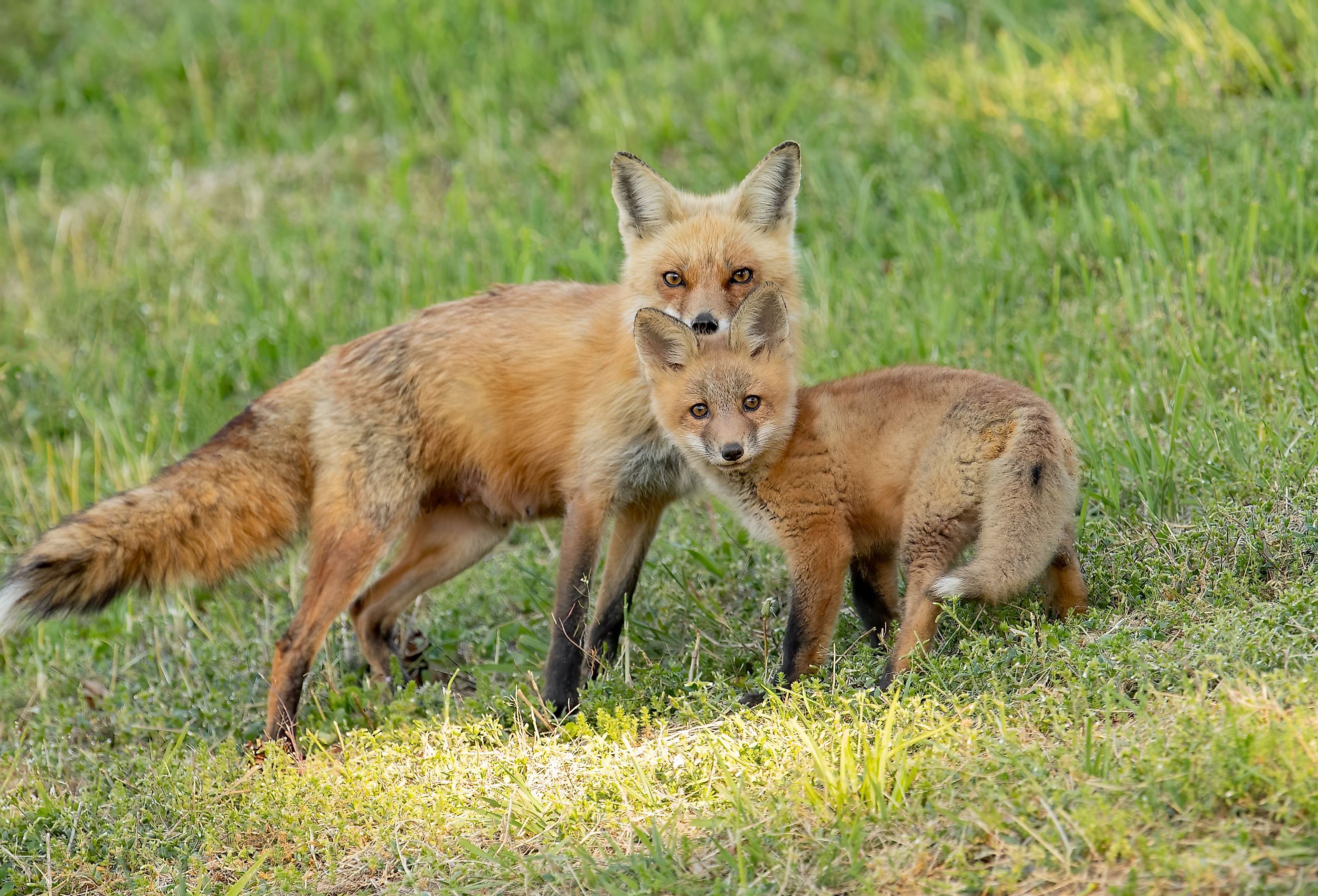
The 10 Coolest Animals In Pennsylvania
Pennsylvania spans from Lake Erie to the Delaware River, covering four important geographical regions of the United States: the Mid-Atlantic, Northeastern, Appalachian, and Great Lakes. Though only the 33rd-largest state in terms of area, the Keystone State is the fifth-most populous. Nonetheless, a robust natural landscape allows many interesting animals to exist here.
Over half of Pennsylvania is covered in forests (albeit somewhat fractured in places due to a long history of logging and ongoing residential expansion), one-quarter is composed of grasslands and other open areas, and there are some remaining wetlands. Like the rest of the country, there have been hard-learned lessons about the importance of conservation, but thankfully, there are many celebratory tales, too. Learn more about the ten coolest animals of Pennsylvania, beginning with the official state favorites.
White-Tailed Deer
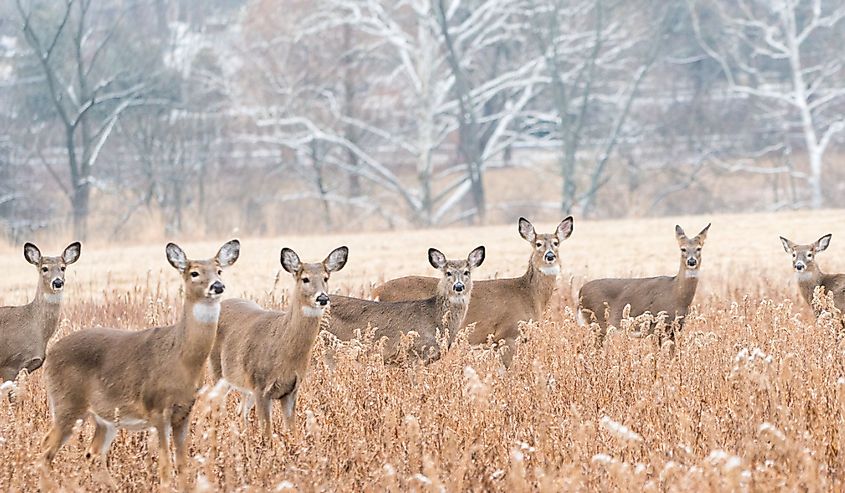
The white-tailed deer (Odocoileus virginianus) is the most widely distributed large mammal in North America, even working its way as far South as Peru. Given the abundant population in Pennsylvania and the plentiful forests in which they roam, the white-tailed deer was a clear choice to become the state mammal. This symbol of the gentle power and harmony of nature generally blends in with the muted woodlands, save for the patch of white fur on the underside of the tail that pops out as it bounds about.
Bucks (males) are larger than does (females), generally standing between 32 to 34 inches (to the shoulder), stretching 70 inches from nose to tail, and weighing about 140 pounds on average (though this may increase considerably during mating season).
Brook Trout
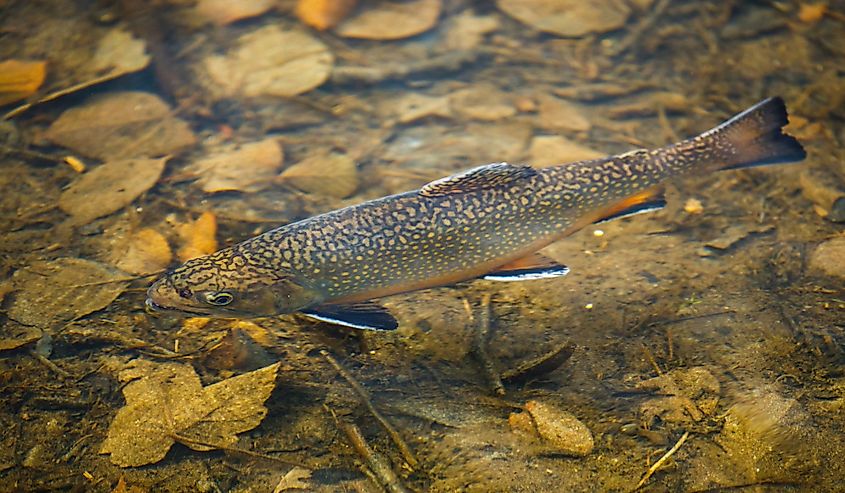
Perhaps not everyone readily sees the cool-factor of fish, but Pennsylvania is hip to the value of the brook trout (Salvelinus fontinalis). The state's only native trout species requires pristine environments and, therefore, acts as an indicator species for the health of the environment and as an incentive to be vigilant.
Also known as the speckled trout (because of its vibrant yellow spots), the brook trout needs bodies of pure freshwater that also exist within a normal (but tight) pH range. They have found such habitats in the brisk streams that meander across Pennsylvania for over 4,000 collective miles. Maintaining healthy conditions for the beautiful brook trout is mutually beneficial for Pennsylvanians, and therefore, it was deemed the state fish in 1970.
Eastern Hellbender
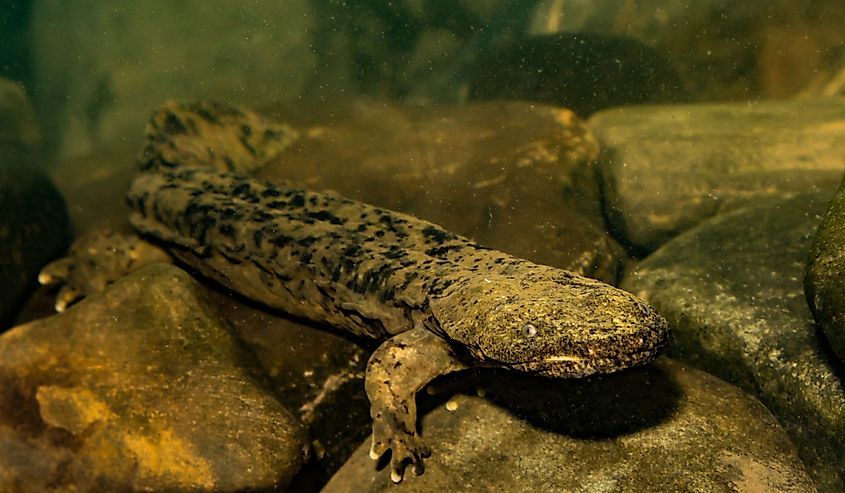
Pennsylvania's state amphibian is another animal that demands an immaculate ecosystem. The eastern hellbender (Cryptobranchus alleganiensis) lives in streams of cool, clear waters and is found in 15 states throughout the Eastern and Central United States. This sizable salamander often seeks refuge under flat rocks submerged beneath the surface. Since it breathes exclusively through its skin, the eastern hellbender needs reliably fresh water.
This elusive creature was only officially recognized by Pennsylvania in 2019 after a determined campaign by the Student Leadership Council of the Chesapeake Bay Foundation. While this subspecies of hellbender maintains its original range, the population levels within each area have declined by over 70% in the last 50 years. Perhaps the power of youth and newly-established oversight will be the dynamic combo necessary to turn the tide.
Ruffed Grouse
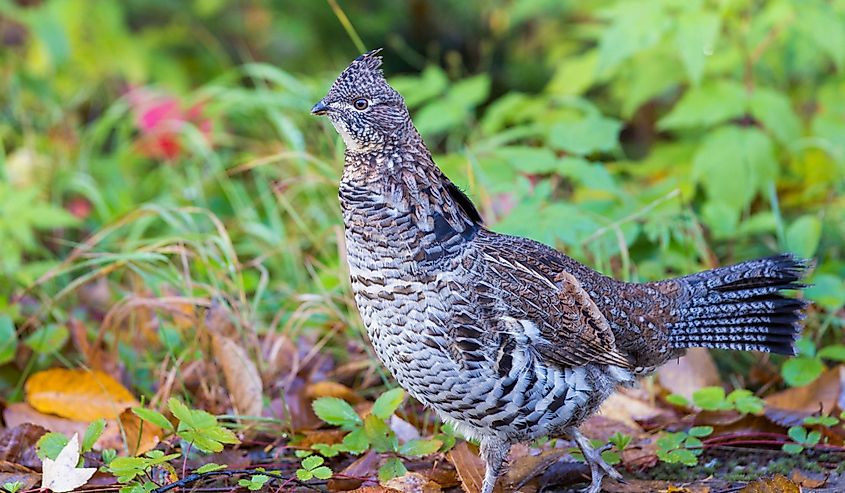
The noble ruffed grouse (Bonasa umbellus) has been the state bird of Pennsylvania since 1931. It can be found throughout many areas of Northern North America but has shown a propensity for the young forests, woodlands, and brushy conditions offered by the Keystone State. "The king of the gamebirds," as the ruffed grouse is also known, is related to the quail, turkey, pheasant, and ptarmigan.
It is medium-sized, with a rich-brown/black-and-white-spotted backside and a white underside covered in dark horizontal bars. Around its neck is a band of iridescent black feathers from which it takes its name. While the ruffed grouse is appreciated by passive bird-watchers and hunters alike, it was a vital food source for early settlers and continues to be a popular target during the regulated hunting seasons.
Pennsylvania Firefly
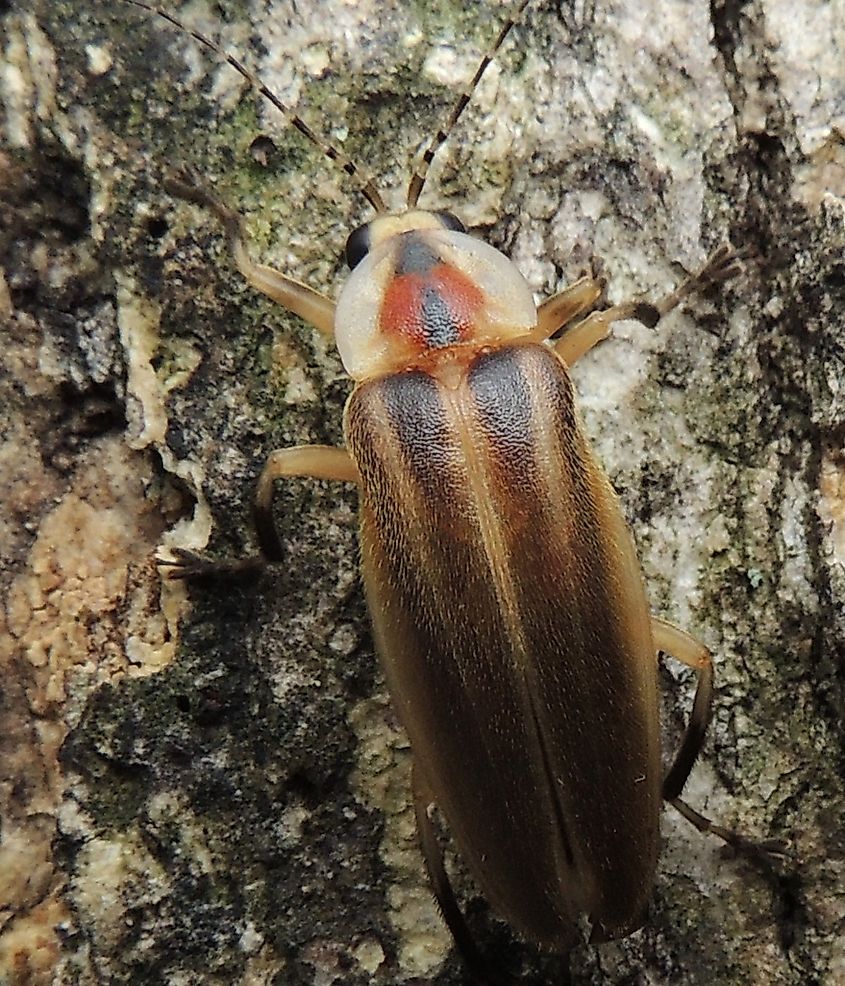
Another encouraging example of young people championing the natural world relates to the Pennsylvania firefly (Photuris Pensylvanica). In 1974, the students of Upper Darby's Highland Park Elementary School were successful in their quest to have this bioluminescent beetle officially recognized as the state insect. While many people find insects off-putting, the Pennsylvania firefly is quite delightful.
During daylight hours, they can be identified by their half-inch black bodies with red eyespots and yellow edges. But as those warm summer evenings descend, collections of "lightning bugs" emit an enchanting yellow-green glow. This mating display has inspired several communal events, including Glow and Know Campouts and the Pennsylvania Firefly Festival (which will celebrate its 12th anniversary in 2024).
Black Bear
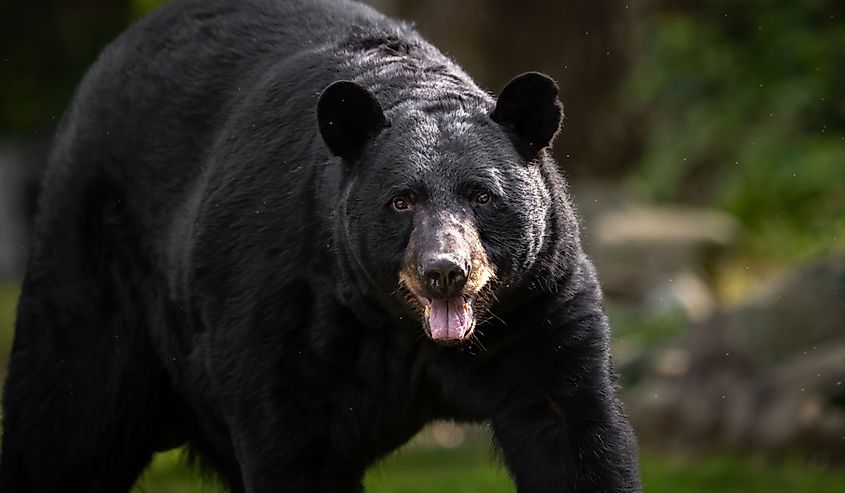
Black bears (Ursus americanus) enjoy a healthy distribution across much of North America, but they are especially symbolic of the forests of Pennsylvania. And even though this is one of the largest animals to roam the state (weighing between 140 and 400 pounds, but occasionally, much heavier still), it is also quite shy and elusive. Black bears are predominantly black (though glossy and with a bit of tan around the muzzle), and there are occasional sightings of cinnamon-colored ursines in the Keystone State. They are, however, still of the same species – lacking the additional mass and distinctive shoulder hump of the grizzly bear (which is not found in this part of the country).
Black bears tend to avoid humans, choosing dusk and dawn (or even switching to nocturnal) to perform the bulk of their activities, but have been known to become habituated in populated areas where they have access to food (either because people feed them directly, or because they raid unsecured garbage bins).
Red Fox
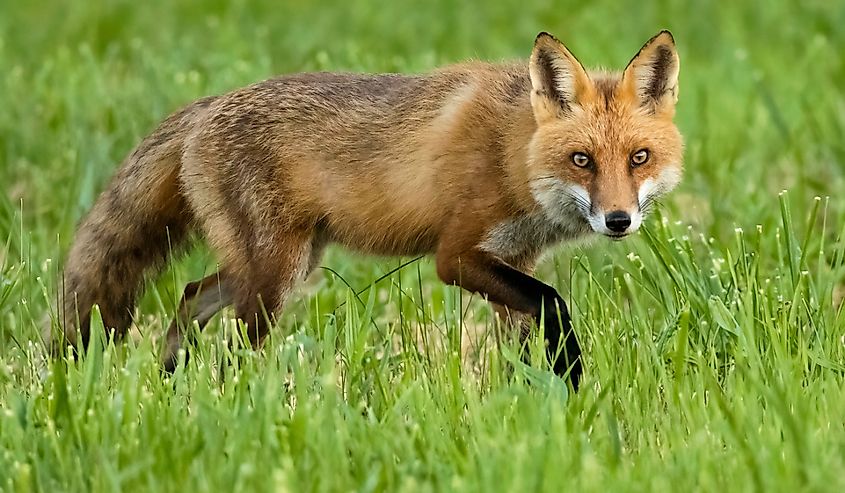
Both the gray and red fox are common in Pennsylvania, but the latter catches the eye a bit more. The red fox (Vulpes vulpes) exhibits reddish-orange fur across its face, backside, and tail, while its underside is gray-white. It also has pointy, black-tipped ears. Though red foxes can have patches of gray, and gray foxes patches of red, the former has a longer snout and white-tipped tail, while the latter has a rounded face and black-tipped tail. Gray foxes also tend to be slightly smaller in stature.
Even though they appear so similar, these two species of fox are only distant relatives and belong to different genera. In terms of habitat, the Pennsylvania wilderness is tailor-made for the red fox. Not only do they like woodlands and brushy fields (as well as wetlands), but they have also happily adapted to rural and suburban neighborhoods.
Northern Flying Squirrel
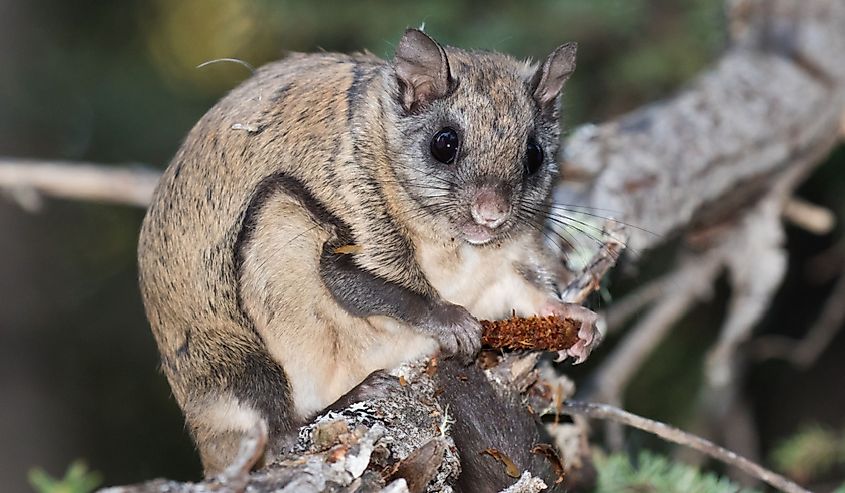
As is billboarded by its name, the northern flying squirrel (Glaucomys sabrinus) packs a super-cool superpower. Thanks to a membrane that connects its fore and hind legs, combined with a broad, flat tail that helps with steering, the northern flying squirrel can glide from tree to tree – generally a distance of 20 to 60 feet, but in exceptional cases, as far as 300 feet!
Unlike the typical scurrying squirrels of Pennsylvania, the flying squirrels (Glaucomys volans also live here) are nocturnal, so they have evolved large, light-sensitive eyes. These arboreal rodents nest within hollow branches or holes left behind by woodpeckers, or they will build a nest out of sticks (i.e., a drey).
Bald Eagle
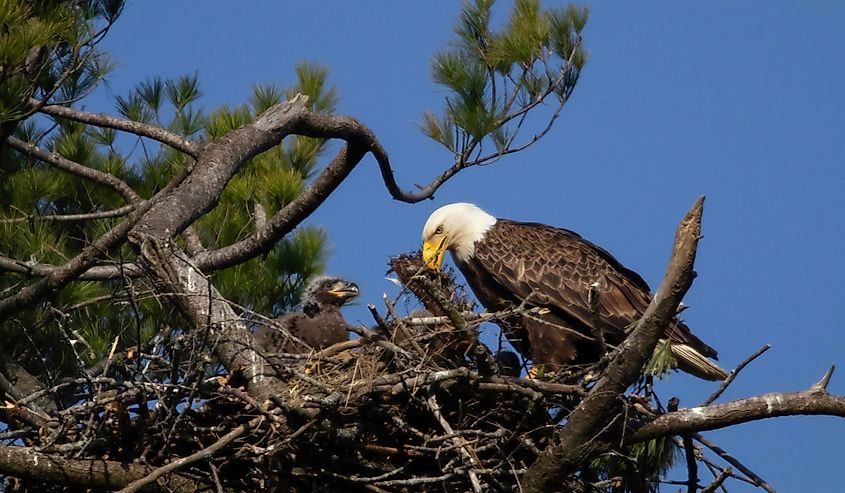
The bald eagle (Haliaeetus leucocephalus) is not only one of the coolest animals in Pennsylvania but one of America's most badass and emblematic animals. This large and visually striking bird-of-prey represents one of the most impactful "close call" stories regarding conservation conversations. Pesticide-related reproduction issues and overhunting nearly cleared the bald eagle from the sky. From the time DDT was restricted (i.e., the early 1970s) until 1995, this proud bird was listed as endangered and protected at the federal level.
Between 1995 and 2007, it was considered "threatened." From that time on, thanks to concerted efforts to boost its population, the bald eagle was removed from the List of Endangered and Threatened Wildlife (in the 48 states). Federal protections remain in place for both the bald and golden eagles, and Pennsylvania takes it a step further with its Game and Wildlife Code. These strategies have paid off. In 1983, there were but three bald eagle nests left in the Keystone State; now, there are over 300.
Porcupine
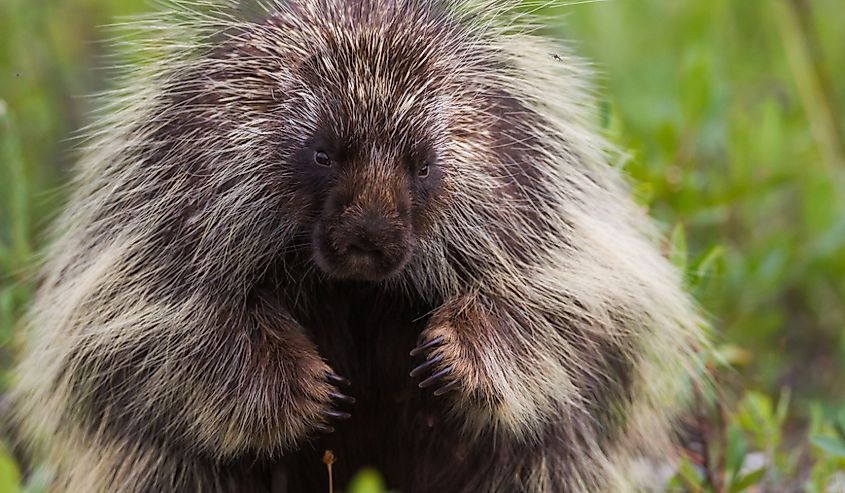
This quilled, waddling rodent has become quite an internet sensation just by eating pumpkins, corn, and other crunchy produce, but it is equally-cool in the wild. The porcupine (Erethizon dorsatum) is easy to identify, thanks to its built-in defense system that erects when threatened. At rest, the quills (as many as 30,000) lie flat and are quite smooth. Though well-armored against aggressors, the porcupine's preferred strategy is to avoid confrontations by spending time in trees. Though klutzy on the ground, they are surprisingly capable climbers.
Along with its unique exterior, the porcupine is North America's second-largest rodent behind the beaver – reaching about 36 to 40 inches in length (tail included) and weighing anywhere from 9 to 20 pounds. While forests are a common denominator, porcupines have been able to inhabit much of the United States (including Alaska) at elevations ranging from sea level to mountain treelines.
Between the Canadian border, New York State, New Jersey/the North Atlantic Ocean, and the Midwest, Pennsylvania draws from key environments and supports a wealth of wildlife. There are animals great and small in the Keystone State. Some hide away within the forests, streams, and grasslands covering much of the land, while others have made their peace amongst humans. These cool animals are ample reason to head out and explore. At all times of the year, in all parts of Pennsylvania, there are incredible creatures to (respectfully) observe.











